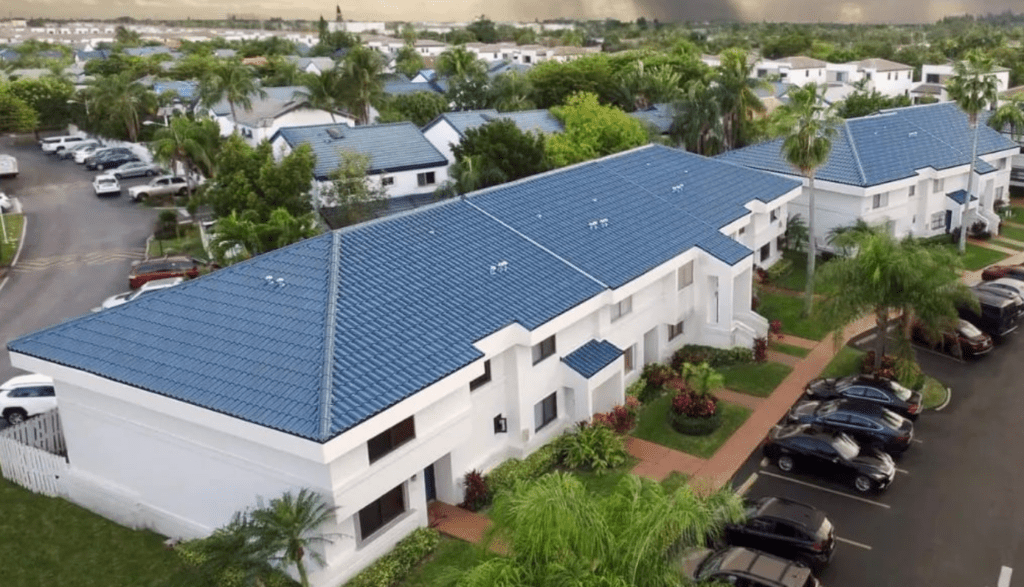Fill out IRS Form 5695, “Solar Investment Tax Credits,” as soon as possible. Then use this to complete your 1040 Schedule 1. With the help of our detailed guide, claiming the solar tax credit is simple!
For homes and businesses that install qualifying solar energy systems, the solar investment tax credit (ITC), also known as the solar tax credit, is a valuable incentive. For 26% of the total cost, the ITC provides dollar-for-dollar rebates. Before utilizing it, homeowners should be aware of a few things. The installation is documented on this form, which you must file with your federal income tax return in order to be eligible for the credit. Before you start, make sure you have all the information you will need! We will walk you through the process of determining how to file with the IRS correctly!
What we cover
- What is the Solar ITC and how does it work
- Who is eligible for the Solar ITC
- How to complete IRS Form 5695
- What to do if you over-claimed or under-claimed the Solar ITC
- Are there any other solar-related tax credits that I should be aware of?
What forms do I need to claim the ITC?
We have your back, so do not worry. If you’re eligible for the ITC and want to claim it on taxes this year – don’t forget about these important forms!
- IRS Form 5695
- IRS Form 1040
What is the Solar ITC and how is it implemented?
A federal tax credit known as the solar ITC can reduce the overall cost of installing solar panels on your house. But before you can get the ITC, you have to purchase the solar panels. An ITC cannot be claimed for a system that is not yet installed.
The solar tax credit was 30% until 2019. As of right now, it is 26%. It needs to be claimed for the year the solar system is put into operation. You would be eligible for the 2020 credit level if the solar system is connected after December 31, 2019. For a solar system to qualify, you need to claim the credit within five years.
What information do you need to claim the credit?
To be eligible for the Solar ITC, you must submit details about the solar energy system you installed, such as:
- the size of the system (Kw)
- the panel manufacturer
- the date of installation
- the cost of the system
- any rebates or incentives you received for installing the system
- Solar Tax Credit
You’ll also need to provide your social security number or employer identification number, and information about your taxable income.
Can I claim the credit if I lease my solar energy system?
No, you can’t claim the credit if you lease your solar energy system. The credit is only available to taxpayers who own their solar energy systems
Most solar companies will already have full install schedules by July, so it’s best to get started now.
Can I claim the credit if I lease my solar energy system?
No, if you lease your solar system, you are not eligible for the credit. Only taxpayers who are the owners of their solar energy systems are eligible for the credit.
It is advisable to start now because by July, the majority of solar companies will already have full install schedules.
Who is eligible for the Solar ITC
There are a number of details that can determine if you are eligible for the Solar ITC. The best way to determine whether you qualify for the ITC is to use an experienced and knowledgeable solar partner. You should also consult a tax professional for help determining if you’re eligible for the ITC.
Businesses must submit IRS Form 5695, which is an attachment to their federal income tax return for the United States, in order to claim the solar ITC. You can carry forward credits for up to 20 years, but it cannot be carried over. You must be a citizen or resident of the United States and owe federal taxes in order to be eligible for the ITC. If you want to install solar panels, you can not include used equipment in the system; instead, it must be entirely new.
But I’m not a company, can I still get the solar tax credit?
Great News! You open and launch a completely new, automated business when you install solar panels on your house. You will now be selling extra energy to your utility company, so you will need to fill out a W9!
So yes, you just became a company.
How to Complete IRS Form 5695
You have come to the correct place if you are wondering how to fill out IRS Form 5695. Use this form to update your Schedule 3 or Form 1040 with refundable credits. It is simple to complete and does not require the assistance of a tax expert. This is the method. After downloading the IRS Form, you can either print it out or import it into a document editor to start filling it out.
You must fill out IRS Form 5695 in order to be eligible for the tax credit. You must fill out this form as part of the Non-Business Energy Property Credit application process when installing a solar energy system. There are specific regulations for jointly owned properties and multi-family homes, but the credit is worth up to 26% of the project’s total cost. Complete the application and refer to the worksheet to ascertain the total credit amount.
This property credit limit worksheet will simplify the process with its instructions.
The IRS Form 5695 must be completed first. This form requests information from taxpayers regarding home improvements they have made. Together with the credit limit, which is determined by the taxpayer’s tax liability, it also includes the total amount of money spent on energy-generating equipment. Additionally, you must complete the Instructions worksheet found on page six in order to complete the form and claim the credit on your tax return.
You must compute your energy-efficient improvement costs and multiply them by the Federal Tax Credit Percentage (26% in 2020) in order to be eligible for this credit. After filling out the form, you must transfer the credit to Schedule 3 of your standard tax return. Next, you have the option to either write a check or enter the value on Form 5695’s line 15.
Make sure everything is correct before signing it. It is best to consult a certified tax professional, as errors on your form can lead to penalties. Not the amount you have received, but the numbers you have been given must be added to line 15 of your regular tax return. If you have a solar array, enter the amount on line 15 to claim the solar tax credit.
The amount you spent on the home improvement you are claiming must be known. To easily demonstrate the credit, you will need to save all of your receipts. You have to include the cost of your home improvements in order to claim this tax credit. For instance, you need to enter the value on line 15 if your house has solar panels. The value of the solar panels you installed on your home must then be added.
What to do if you over-claimed or under-claim the Solar ITC
The IRS has released a new guide on what to do if you overclaim or underclaim the Solar ITC in an attempt to assist homeowners in taking advantage of this credit. Now, homeowners can correct mistakes made when claiming the Solar ITC by submitting Form 8919, a “corrections” form. You have two years from the date you paid the tax, or three years from the date of the initial return, to file this form.
You might be wondering if filing Form 8919 is actually necessary. If any of the following are true, then the response is yes:
Upon your return, you claimed the solar ITC, but you never installed any wind turbines or solar panels.
You put in wind turbines or solar panels, but you took more credit than you should have.
You overclaimed for a credit that was not yours.
You do not need to file Form 8919 if none of the aforementioned situations relate to you.
Are there any other solar-related tax credits that I should be aware of?
There are a few other solar-related tax credits that homeowners should be aware of. The Residential Energy Conservation Subsidy Exclusion (RECSE) is a federal tax credit that allows homeowners to exclude from their taxable income the value of any energy conservation subsidies they receive from their utility company. This credit can be claimed for solar energy systems.
The Solar ITC is a valuable credit that can help homeowners reduce the cost of their solar installation. However, it’s important to make sure you claim this credit correctly, as mistakes can lead to penalties and interest charges. If you’re not sure how to claim the Solar ITC, or if you think you may have made a mistake while claiming it, be sure to consult with a tax professional.
Don’t you own a solar system yet? Compare quotes on Solar Directory
This is the perfect time to invest in solar power if you have been waiting for it. There is not a better deal out there with our free custom quotes from pre-vetted installers on the Solar Directory Marketplace and a 26% tax credit available as long as you owe taxes.






